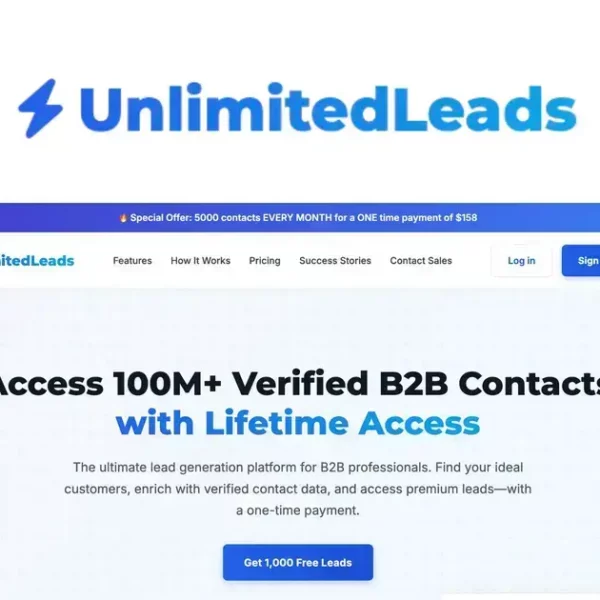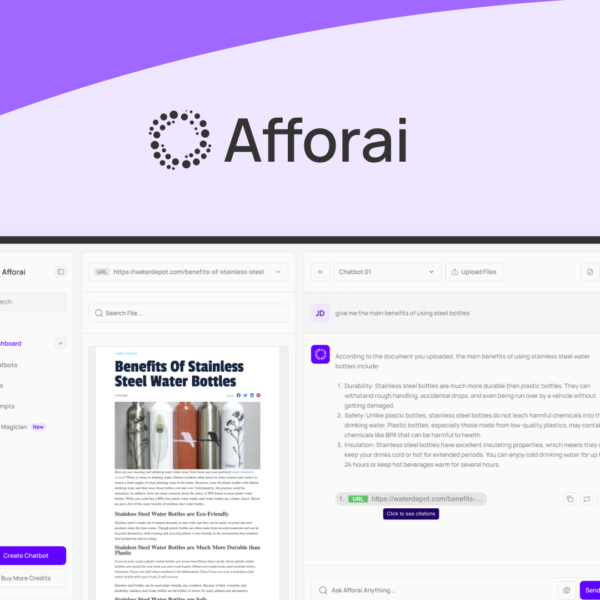If you’re considering a **SaaS** lifetime deal, it’s crucial to know what to look for. Are you ready to make a purchase that will benefit your business for years to come?
Do Your Homework on the Developer and the Company
Before you invest in a SaaS lifetime deal, it’s key to do your homework on the developer and the company behind the product. Knowing who you’re dealing with can save you from headaches down the road.
Check the Company’s Background
Start by looking up the company’s history. How long have they been in business? A long-standing company usually has more reliable products. Look for reviews and ratings to see what other users say.
Research the Developer’s Experience
Get to know the developer who built the software. Do they have experience in creating similar tools? Understanding their background can give you confidence in their skills. Look for their previous projects and see how successful they were.
Look for Transparency
A trustworthy company should be open about its team and development process. Check their website for team bios or LinkedIn profiles. This information helps you see the faces behind the software.
Find Out About Their Support
Good support is vital. Check if the company offers reliable customer service. This includes live chat, email support, and a strong knowledge base. Quick and helpful support can make a big difference.
Watch for Red Flags
Be cautious of companies that hide information or don’t provide clear contact details. If a developer seems evasive or their website has little detail, it might be best to steer clear. Always trust your instincts as you do your homework.
Check what Features Have Been Rolled Out Recently

When considering a SaaS product, it’s important to check what features have been rolled out recently. Updates can tell you a lot about a product’s growth. You want to make sure the tool keeps getting better.
Review the Update History
Look for a list of recent updates on the company’s website. This can show you how often they improve their software. Frequent updates are a good sign that the company cares about its product.
Explore New Features
Find out what the latest features are. Are they useful for your needs? Read the release notes provided by the company. This helps you see if they added anything that could benefit you.
Check for User Feedback
User feedback is very important. Check reviews and forums to see what people are saying about new features. Are users happy or frustrated? Their opinions can help you decide if the product is right for you.
See if There’s a Roadmap
A good company often shares its future plans. A product roadmap can show you what features are coming next. This can help you understand how the product will evolve over time.
Assess Feature Stability
Finally, check how stable the new features are. Have users reported any major bugs? Reliable software should not just have new features, but those features should work well too.
Look at Their Roadmap
Looking at a SaaS company’s roadmap is important before making a purchase. This shows you where the product is heading. A clear roadmap can indicate the company’s commitment to its users.
Understand the Future Plans
Roadmaps typically outline upcoming features and improvements. Knowing what’s planned can help you decide if the product will meet your future needs. Look for features that excite you!
Evaluate Development Timelines
Pay attention to timelines on the roadmap. When does the company plan to launch new features? This helps you understand how quickly they respond to user needs.
Check for User Input
Some companies ask users for input on their roadmap. Look for opportunities where they seek feedback. This shows they value their customers and want to build a product together.
Assess Market Trends
A good roadmap should also consider market trends. Find out if the company keeps up with changes in the industry. Being aware of trends can mean better features for you.
Gauge Long-term Commitment
Finally, a detailed roadmap can show the company’s long-term commitment. If their plans stretch far into the future, it can mean stability. This is a positive sign that the company intends to stick around and support its product.
Chat with Their Support

Chatting with a SaaS company’s support team is a smart move before you buy. This can give you valuable insights into their service and response time. Here’s how to make the most of it.
Reach Out Before Buying
Try reaching out to their support team before you make a purchase. Ask some common questions to see how quickly they respond. This will give you a feel for their customer service.
Ask About Current Issues
Don’t hesitate to ask about any current issues or bugs. A good support team will be transparent about any problems. This shows how much they value keeping customers informed.
Inquire About Support Channels
Find out what support channels they offer. Do they have live chat, email, or phone support? Knowing your options can help you feel more secure about getting help when needed.
Assess Their Knowledge Base
Check their resources like guides or FAQs. A solid knowledge base can make a big difference. If they have helpful content, it shows they care about their users’ experience.
Evaluate Support Response Times
Finally, pay attention to how long it takes for them to respond to you. Quick responses usually mean you’ll receive better service in the long run. Good support can make using the software a breeze.
Decide Whether the Product Fills a Current or Upcoming Need
Deciding whether a SaaS product meets your current or future needs is vital. Knowing what problems a product can solve makes your purchase much smarter.
Identify Your Immediate Needs
Start by listing what you need help with today. Are you looking to save time or improve collaboration? Pinpointing these needs will guide your choice.
Consider Future Growth
Think about your future goals too. Will this product still be useful as your business grows? A tool that can scale with you is often a better investment.
Check Product Versatility
Look for features that can handle multiple tasks. A versatile product can adapt to changing needs. This can save you time and money down the road.
Assess Integration Capabilities
Make sure the product can integrate with other tools you use. Seamless integration makes processes smoother and improves efficiency.
Gather Team Feedback
Finally, get feedback from your team. They know best what features will help them daily. Involving your team can lead to a more informed decision.




